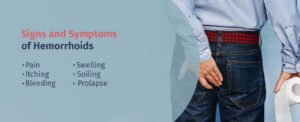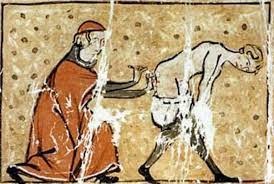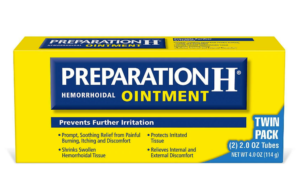Raboyseyee and Ladies,
Tonight at 6 PM, the heylige Ois and eishes chayil will have the great pleasure of attending the wedding of Zach Sher, he the son of our friends Helene & Larry Sher. We begin with a big mazel tov shoutout to Zach, his beautiful bride Rena Sidlow, she the daughter of Rachel Katz Sidlow and Robert Sidlow and both extended families. We have known Zach since birth and as our children and many others tell us, Zach is -among other great things- very nice. May Rena and Zach merit to build a beautiful home together. We look forward to participating in this great simcha.
And in the week the Queen of England passed, a new prince was born, this one to the Gottesmans -as in Judith and Shlomo- when their daughter Talia gave birth to a baby boy – you read that correctly- the first grandson after many granddaughters, keyn yirbu. Will wonders never cease!? A big mazel tov to the parents Gabbi and Talia Stone, to Gabi’s parents, Ellen and Stanley Stone, to the entire extended Gottesman and Stone families, and of course the great grandparents, Mrs. Sondra Gottesman and Mrs. Blanche Lerer. May you have much nachas from baby Stone and we look forward to his bris tomorrow and of course to his naming.
——————————————————————————————————————–
The Anus, Hemorrhoids and other Scatological Terminology
Scata what? Has the heylige Ois flown the coup? Is he off the reservation and talking out of his rear end but days before Rosh Hashono? Oy vey! Ober, let us not judge so quickly; after all, do you want the RBSO judging you before hearing all the mitigating reasons you plan to offer for bad behavior this past year? You do not! Instead, let’s read what the Ois has in store this week. And we begin with this:
According to the Mayo clinic -and who can argue with them? – Hemorrhoids (HEM-uh-roids), also called piles, are swollen veins in your anus and lower rectum, similar to varicose veins. Hemorrhoids can develop inside the rectum (internal hemorrhoids) or under the skin around the anus (external hemorrhoids). Nearly three out of four adults will have hemorrhoids from time to time. Hemorrhoids have a number of causes, but often the cause is unknown. One more factoid: Hemorrhoids and other disorders of the anus have been described fairly precisely from as far back as ancient times and from all parts of the world.

Ancient times? Is the cause mamish unknown? Who invented the hemorrhoid? Who was the first to introduce the hemorrhoid? And for what purpose?
Welcome to Parshas Ki Sovoy, most well-known for the 98 curses the RBSO plans to visit upon His chosen people for bad behavior, and, just as well known for having the 98 read to us in a hushed tone (in most shuls). Would you believe me if I told you that one of the 98 curses the RBSO threatens this week is the hemorrhoid? Not just one, but many!? It is! Garda (so happens), this past Tuesday evening a well-known and excellent ba’al koreh (Toirah reader) who quietly and without fanfare goes about performing various random acts of chesed daily, was visiting with the Ois on a charity matter. The Ois shared that the topic of the week is the hemorrhoid and that hemorrhoids make an appearance in our parsha. Did he know that? Though he’s reading the parsha this week, he did not! Shoin, he’ll zicher know later tonight when re reads this week’s post.
The first mention of hemorrhoids -as just mentioned- is mamish in our parsha, which lists the rewards and severe punishments based on the Yiddin’s behavior: Shoin, let’s begin by reading the relevant posik innaveynig and from there, we will dig deep -if you chap- for answers. Just what did the RBSO have in mind when -amongst the 98 curses- He introduced the hemorrhoid?
| The Lord will strike you with the boils of Egypt, with hemorrhoids, with oozing sores, and with dry lesions, from which you will be unable to be cured. | כזיַכְּכָ֨ה יְהֹוָ֜ה בִּשְׁחִ֤ין מִצְרַ֨יִם֙ וּבַטְחֹרִ֔ים (כתיב ובעפלים) וּבַגָּרָ֖ב וּבֶחָ֑רֶס אֲשֶׁ֥ר לֹֽא־תוּכַ֖ל לְהֵֽרָפֵֽא: |
In the posik above and in many others in our parsha, the Yiddin are being admonished by the RBSO and told that if they stray from observing the commandments, they will be inflicted with punishments. It does epes appear -from the text itself- that one of the most severe punishments the RBSO will inflict is the hemorrhoid. Ober did you notice the word for hemorrhoid yellow-lighted above? And did you notice the word change -also highlighted- in the Hebrew? Did you notice that the word -as written in the heylige Toirah- is not how the reader will read -or how the listener will hear it in shul this coming shabbis? What’s up below? Why taka, is it written one way but read to the congregation another? Are we allowed to change words? The RBSO’s words? What’s pshat here? The actual word for hemorrhoids has been switched and is what we -in the yeshiva world- grew up knowing as the old “Ksiv/Kri (כתיב/קרי), trick” where the word is written one way and read another. The written word used is “Bapolim בעפלים” but the read version is “Batchorim בטחורים.” Either way, none sound very pleasant.
Shoin, I can tell you’re mamish confused, let us try again. It’s quite poshit: the word reads one way but is pronounced another. Check the posik above and notice please below that the word is written one way in the heylige Toirah but on shabbis when read out loud (or in a hushed tone in most shuls), the word itself will be changed.
| What the Text Actually Says (Kesiv) | What the Listener Will Hear (Qeri) |
| יַכְּכָה יְ-הֹוָה בִּשְׁחִין מִצְרַיִם ובעפלים וּבַגָּרָב וּבֶחָרֶס אֲשֶׁר לֹא תוּכַל לְהֵרָפֵא: | יַכְּכָה יְ-הֹוָה בִּשְׁחִין מִצְרַיִם וּבַטְּחֹרִים וּבַגָּרָב וּבֶחָרֶס אֲשֶׁר לֹא תוּכַל לְהֵרָפֵא: |
| The RBSO will strike you with the Egyptian inflammation, with hemorrhoids, boil-scars, and itch, from which you shall never recover. | The RBSO will strike you with the Egyptian inflammation, with abscesses, boil-scars, and itch, from which you shall never recover. |
And listen to this: this is not a one-off; in fact, the heylige Toirah and the Novee (especially the Novee) are replete with numerous examples of words that are written one way but are meant to be read out loud a different way. And this phenomenon raboyseyee is known as the k’ri kisiv- (כתיב-קרי) concept, meaning literally, the “written” version (kesiv) and the publicly “read” version. By way of example, in the heylige Toirah the RBSO’s name is spelled with the letters Yud, Hey, Vov, Hey but to the reader, it’s read quite differently. Zicher (of course) you all know that according to Jewish tradition, the name formed by the letters may not be pronounced, and is replaced in public readings with the word meaning “our LORD.”
Why changes were made by our sages to the written word of the RBSO is for another day, but for today the bottom line is this: the concept of k’ri and kisiv is real, so is the hemorrhoid! It’s in our parsha. Another bottom line: many of the instances of K’ri-Kesiv make no difference in meaning, and can be explained by assuming that the scribes were unsure which text was correct and found a way of including multiple options. Examples of such differences are:
- Defective (חסר) vs. plene (מלא) spelling,
- Inclusion or exclusion of the conjugal vav,
- Different grammatical constructs,
- Similar looking letters,
- Archaic spelling or grammatical features modernized over time.
Certain instances of Kesiv-k’ri, however, cannot be explained by scribal confusion or slight adjustments in spelling or grammar over time. And if that’s the case, why taka were changes made? Why would a word chosen by the RBSO and later by the Novee changed to a different word? Who gave us the right to make such changes? Not to worry because our sages of the heylige Gemora were all over this issue as we will read below.

Moreover, the words ophalim and techorim do not sound similar and they are not synonyms. They are both painful, physical afflictions, whose main difference lies in where on the body the affliction occurs. Techorim are likely abscesses, which can appear anywhere on the body. Ophalim, however, which literally means “swellings,” likely refers to hemorrhoids, an affliction of the anus. Shoin, I said it! As an aside, the Radak says farkert: ophalim is a reference to the buttocks and techorim to the affliction. The bottom line: someone decided -for some reason- that the written word should not be read aloud and decided to change the word to a new word which is seemingly more palatable.
And listen to this factoid: this type of scribal adjustment appears -as mentioned above- elsewhere in the Novee mostly in connection with scatological terminology. What the hec is scatological terminology you ask? Taka a good question and admittedly not a word taught in the Mirrer Yeshiva (and a few others). Says the Oxford dictionary azoy: the word is an adjective relating to, or characterized by an interest in excrement and excretion. Those who know the Ois well, zicher also know that he enjoys “scatological humor.” So happens that word adjustment does also appear one more time mamish in our parsha where our rabbis decided they didn’t like the word the RBSO used when describing yet another punishment of the list of 98. That punishment involved a man who has betrothed a woman, but another man will lie with her. What to do? They changed the word! Ut azoy (and that’s how it’s done). Lets’ read Devorim 28:30, where a crasser term for sex (ש-ג-ל) is replaced with the more polite “lie with” (ש-כ-ב).
| You will betroth a woman, but another man will lie with her. You will build a house, but you will not live in it. You will plant a vineyard, but you will not redeem it[s fruits]. | לאִשָּׁ֣ה תְאָרֵ֗שׂ וְאִ֤ישׁ אַחֵר֙ יִשְׁכָּבֶ֔נָּה (כתיב ישגלנה) בַּ֥יִת תִּבְנֶ֖ה וְלֹֽא־תֵשֵׁ֣ב בּ֑וֹ כֶּ֥רֶם תִּטַּ֖ע וְלֹ֥א תְחַלְּלֶֽנּוּ: |
Ober (that being said) why not write hemorrhoids as Tchorim (טחורים)? What are Apolim (עפולים)? Why do we need to write it one way and read it another? What’s pshat? Says Rashi azoy: both words refer to the anus, but בטחורים is less explicit. It’s more inuendo -if you chap. Therefore, when the Toirah writes the word “Apolim,” we know that it means “Tchorim” (hemorrhoids). Grada, in the English language we have a similar custom. Instead of using the vulgar term “ass” it is more socially acceptable to prefer to use the word “buttocks.” Says the heylige Gemora (Megillah 25b), azoy: “…The Rabbis taught in a Baraisa: All verses that are written in the Toirah indelicately, when recited for the congregation, are read delicately. For example: for yishgalena we read yishkavena; for bapolim we read batchorim…
תנו רבנן: כל המקראות הכתובין בתורה לגנאי, קוראין אותן לשבח. כגון: “ישגלנה, ישכבנה”; בעפולים, בטחורים
But guess what? The hemorrhoid makes another appearance. The next mention of hemorrhoids can be found in the heylige Novee (Prophets) in the book of 1Shmuel (5:1-12) where we read this mamish amazing shtikel history of the Yiddin. The Holy Ark (Aron Hakoidesh) was taken out from the Mishkan in Shiloh and carried to battle against the Plishtim (Philistines) near Even Haezer. The Jews lost the battle and to add insult to injury, the Aron Hakoidesh was captured by the Plishtim. The Aron seemingly belonged inside the Koidesh Kodashim of the Mishkan, not the battlefield. Shoin, the argument of whether or not the Aron should have, or shouldn’t have been, out in the battlefield is for another day. That argument aside, the RBSO hit the Plishtim with a possession charge and punished them. With what? The RBSO inflicted upon them a severe case of hemorrhoids. Because you think the Ois is making this all up, let us read both the Hebrew and the English. I have bolded the word for hemorrhoids.
וּפְלִשְׁתִּים לָקְחוּ אֵת אֲרוֹן הָאֱלֹקים וַיְבִאֻהוּ מֵאֶבֶן הָעֵזֶר אַשְׁדּוֹדָה: ויִּקְחוּ פְלִשְׁתִּים אֶת אֲרוֹן הָאֱלֹקים וַיָּבִאוּ אֹתוֹ בֵּית דָּגוֹן וַיַּצִּיגוּ אֹתוֹ אֵצֶל דָּגוֹן: וַיַּשְׁכִּמוּ אַשְׁדּוֹדִים מִמָּחֳרָת וְהִנֵּה דָגוֹן נֹפֵל לְפָנָיו אַרְצָה לִפְנֵי אֲרוֹן ה’ וַיִּקְחוּ אֶת דָּגוֹן וַיָּשִׁבוּ אֹתוֹ לִמְקוֹמוֹ: וַיַּשְׁכִּמוּ בַבֹּקֶר מִמָּחֳרָת וְהִנֵּה דָגוֹן נֹפֵל לְפָנָיו אַרְצָה לִפְנֵי אֲרוֹן ה’ וְרֹאשׁ דָּגוֹן וּשְׁתֵּי כַּפּוֹת יָדָיו כְּרֻתוֹת אֶל הַמִּפְתָּן רַק דָּגוֹן נִשְׁאַר עָלָיו: עַל כֵּן לֹא יִדְרְכוּ כֹהֲנֵי דָגוֹן וְכָל הַבָּאִים בֵּית דָּגוֹן עַל מִפְתַּן דָּגוֹן בְּאַשְׁדּוֹד עַד הַיּוֹם הַזֶּה: וַתִּכְבַּד יַד הֹ` אֶל הָאַשְׁדּוֹדִים וַיְשִׁמֵּם וַיַּךְ אֹתָם בעפלים (קרי בַּטְּחֹרִים( אֶת אַשְׁדּוֹד וְאֶת גְּבוּלֶיהָ: וַיִּרְאוּ אַנְשֵׁי אַשְׁדּוֹד כִּי כֵן וְאָמְרוּ לֹא יֵשֵׁב אֲרוֹן אֱלֹקי יִשְׂרָאֵל עִמָּנוּ כִּי קָשְׁתָה יָדוֹ עָלֵינוּ וְעַל דָּגוֹן אֱלֹקינוּ: וַיִּשְׁלְחוּ וַיַּאַסְפוּ אֶת כָּל סַרְנֵי פְלִשְׁתִּים אֲלֵיהֶם וַיֹּאמְרוּ מַה נַּעֲשֶֹה לַאֲרוֹן אֱלֹקי יִשְׂרָאֵל וַיֹּאמְרוּ גַּת יִסֹּב אֲרוֹן אֱלֹקי יִשְׂרָאֵל וַיַּסֵּבּוּ אֶת אֲרוֹן אֱלֹקי יִשְׂרָאֵל: וַיְהִי אַחֲרֵי הֵסַבּוּ אֹתוֹ וַתְּהִי יַד הֹ` בָּעִיר מְהוּמָה גְּדוֹלָה מְאֹד וַיַּךְ אֶת אַנְשֵׁי הָעִיר מִקָּטֹן וְעַד גָּדוֹל וַיִּשָּׂתְרוּ לָהֶם עפלים (קרי טְחֹרִים): וַיְשַׁלְּחוּ אֶת אֲרוֹן הָאֱלֹקים עֶקְרוֹן וַיְהִי כְּבוֹא אֲרוֹן הָאֱלֹקים עֶקְרוֹן וַיִּזְעֲקוּ הָעֶקְרֹנִים לֵאמֹר הֵסַבּוּ אֵלַי אֶת אֲרוֹן אֱלֹהקי יִשְׂרָאֵל לַהֲמִיתֵנִי וְאֶת עַמִּי: וַיַּאַסְפוּ אֶת כָּל סַרְנֵי פְלִשְׁתִּים וַיֹּאמְרוּ שַׁלְּחוּ אֶת אֲרוֹן אֱלֹקי יִשְׂרָאֵל וְיָשֹׁב לִמְקוֹמוֹ וְלֹא יָמִית אֹתִי וְאֶת עַמִּי כִּי הָיְתָה מְהוּמַת מָוֶת בְּכָל הָעִיר כָּבְדָה מְאֹד יַד הָאֱלֹקים שָׁם: וְהָאֲנָשִׁים אֲשֶׁר לֹא מֵתוּ הֻכּוּ בעפלים (קרי בַּטְּחֹרִים) וַתַּעַל שַׁוְעַת הָעִיר הַשָּׁמָיִם.
And the Plishtim took the Aron of Hashem and they brought it from Even Hazer to Ashdod. And the Plishtim took the Ark of G-d and brought it to the house of Dagon, and set it up beside Dagon. And the people of Ashdod arose early in the morning and behold, Dagon was falling face downward to the ground before the Ark of Hashem and they took Dagon and returned it to his place. And they arose early the next morning, and behold, Dagon fell face down on the ground, before the Ark of the Hashem, and Dagon’s head and the two palms of his hands were cut off, and lying) on the threshold; only Dagon’s body remained intact. Therefore, the priests of Dagon and all those who come to the house of Dagon, do not tread upon the threshold of Dagon in Ashdod until this day. The hand of Hashem then became heavy upon the Ashdodites, and He devastated them; He struck them with hemorrhoids, Ashdod and its borders.
And the people of Ashdod saw that it was so, and they said, “Let not the Ark of the G-d of Israel dwell with us, for His hand is severe upon us and upon Dagon, our god. And they sent and gathered all the lords of the Plishtim unto them, and they said, “What shall we do to the Ark of the G-d of Israel? “And they said, “Let the Ark of the G-d of Israel be brought around to Gat,” and (thereupon), they transferred the Ark of the G-d of Israel. And it was, after they had brought it around, that the hand of Hashem was upon the city (with) a great panic, and He smote the people of the city, both young and old, and hemorrhoids broke out in their hidden parts. And they sent away the Ark of G-d to Ekron, and it was that when the Ark of G-d came to Ekron, that the Ekronites cried out, saying, “They have brought around the Ark of the G-d of Israel to me to kill me and my people. And they sent and gathered all the lords of the Plishtim, and they said, “Send away the Ark of the G-d of Israel, and let it return to its place, so that it will not kill me and my people,” for there was a panic of death in the entire city; the hand of G-d was very heavy there a panic of death. And the people who did not die, were smitten with hemorrhoids, and the cry of the city ascended to heaven. (Shmuel 1 5:1-12)

In case you’re wondering, here’s what happened next: The Aron Hakoidesh was in Plishti custody for seven months. The Plishti rear ends were on fire, their hemorrhoids burning them mishuga. They then wanted to get rid of the Aron and return it to the Jews because of the hemorrhoid affliction. Their priests told them to return the Aron with the proper gifts in order to be healed from their hemorrhoids. Let’s read veyter.
ויאמרו מה האשם אשר נשיב לו ויאמרו מספר סרני פלשתים חמשה עפלי (טחרי קרי) זהב וחמשה עכברי זהב כי מגפה אחת לכלם ולסרניכם: ועשיתם צלמי עפליכם (טחרכם קרי) וצלמי עכבריכם המשחיתים את הארץ ונתתם לאלקי ישראל כבוד אולי יקל את ידו מעליכם ומעל אלקיכם ומעל ארצכם:
So they said, “What is the guilt-offering that we should send back to Him?” They answered, “According to the number of Plishti governors — five golden images of hemorrhoids (Afley/Tchori) and five golden mice; for the same plague is upon all of you and upon your governors. Make your images of hemorrhoids (Afleichem/Tchoreichem) and your images of mice which are demolishing the country, and give them as homage to the G-d of Israel; perhaps He will alleviate His hand from upon you and your gods and your land. (Shmuel 1, 6:4-5)
And if that weren’t enough let’s check out the Radak who sheds more light on this dark area, if you chap. The Plishtim were hit with a specific affliction of hemorrhoids, one custom designed by the RBSO. When the Plishtim would relieve themselves, mice would bite their bleeding hemorrhoids. Therefore, the Plishtim sent golden mice as presents to G-d, since they recognized that these mice were sent by G-d and not by chance. Let’s also read the Abarbanel who sheds more light: the mice would pull on the rectums of the Plishtim and prolapse their intestines. According to a gastroenterologist the Ois consulted earlier this week, it so happens that Grade 4 hemorrhoids are by definition internal hemorrhoids that are prolapsed externally and are thus very painful. Interesting?

Is that if for the hemorrhoid? Not! In fact, they pop up and out -if you chap- in several other discussions in the heylige Gemora whuch discusses causes and potential cures. The heylige Gemora (Nedorim 22A) proffers an answer as to why people -in the times of the Gemora- got hemorrhoids. Says Rav Shmuel: hemorrhoids are caused by anger. Mamish? Rabbi Shmuel bar Nachmeini taught: Whoever gets angry becomes controlled by all forms of Gehinnom (hell). Moreover, he becomes prone to hemorrhoids. Wait! There’s more and the heylige Gemora (Kesuvis 111A) tells us that the currently accepted medical etiology of hemorrhoids is that they appear from prolonged sitting. We’re not talking about sitting in yeshiva learning though such sitting too could become an issue -a pain in the tuchis mamish- to one’s wife, in-laws, and parents. “Sitting too long causes hemorrhoids.” Not satisfied? The Ois dug up some more in the Gemora and let’s read what was found in Brochis 55A (also quoted in Shabbis): Has it not been taught? Ten things bring on hemorrhoids:
- Eating the leaves of reeds
- Eating the leaves of vines
- Eating the sprouts of vines
- Eating the rough parts of the flesh of an animal
- Eating the backbone of a fish
- Eating salted fish not sufficiently cooked
- Drinking wine lees
- Wiping oneself with lime
- Wiping with potters’ clay
- Wiping with pebbles which have been used by another.
- Some add, to strain oneself unduly in a privy! – There is no contradiction: one statement refers to one who stays long and strains himself, the other to one who stays long without straining himself.
Ober what to do if one is afflicted with hemorrhoids? Not to worry because everything can be found in the heylige Gemora and in Shabbos (82A) the Gemora gives us practical advice and also refers to hemorrhoids as the “three teeth.”
Huna said to his son Rabbah: What is the reason that you are not frequently sitting as a disciple before Rav Chisda, whose teachings are sharp? Rabbah replied to him: For what should I go him more often? For whenever I do go to him to study, he sits me down before him and tells me about mundane matters, rather than words of Toirah! For instance, he said to me: One who enters a latrine to relieve himself should not sit down forcefully, nor should he strain himself overly to eliminate; for the rectum is supported by 3 teeth, and therefore these practices must be avoided, lest the teeth of the rectum become dislocated and the person come to be endangered. Rav Huna said to his son: He (Rav Chisda) is dealing with issues that impact the very lives of people, and you say that he speaks of mundane matters!? If he discusses matters of such importance certainly you should go to him and study!
 And we close with this: The heylige Gemora, wherein on can find more than just knowledge, (Kesuvis 10B) gives practical medical advice on how to prevent hemorrhoids: Dates when eaten in the morning and evening, they are good for a person; when eaten in the afternoon, they are bad for a person; when eaten at noon, there is nothing like them, and they nullify three things:
And we close with this: The heylige Gemora, wherein on can find more than just knowledge, (Kesuvis 10B) gives practical medical advice on how to prevent hemorrhoids: Dates when eaten in the morning and evening, they are good for a person; when eaten in the afternoon, they are bad for a person; when eaten at noon, there is nothing like them, and they nullify three things:
- Bad thoughts (worry)
- Intestinal sickness and
- Hemorrhoids
As well, we find another cure, this one in the Gemora (Gittin) where we find this cure: For hemorrhoids (רושחתא – לרש”י תחתוניות: Bring acacia, aloe, quicksilver, litharge(silver scum), a phyllon (fragrant flower) locket and dove (or chicken) excrement, wrap them in rags of flax cloth during the summer, and in rags of cotton during the winter, and place them [on the hemorrhoids].
The final bottom line: you can also try Preparation H and other more modern remedies. And now you know.

A gittin Shabbis-
The Heylige Oisvorfer Ruv
Yitz Grossman
